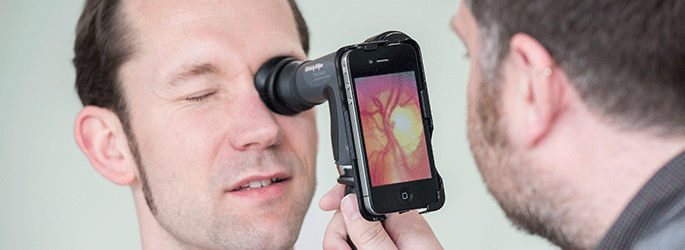
Blog

You’re interested in becoming a Biomedical Engineer and solving problems that allow people with conditions or injuries to live the best life they can. But do you know about the range of areas of specialism you could pursue once you finish the course?
Take a look but remember, this is just a taste of the range of areas you could go into...
1. Rehabilitation and Independent Living Assistive Technology (AT)
Work in this area focuses on products and services designed for use by the elderly or disabled, including designing and maintaining mechanical devices that enable independence by combining the use of advancements in material science with smart mechanisms and software. This encompasses products such as artificial limbs, orthoses, prostheses and wheelchairs as well as surgical and medical restorative techniques, artificial intelligence and IT-based devices.
More about AT from the Assistive Technology Industry Association
2. Cardiopulmonary engineering
This focuses on the use of engineering analysis methods to assess the functions of the cardiopulmonary system as a disease progresses. Biomedical engineers in this realm help develop solutions by combining engineering technologies with imaging methods to improve the bio-compatibility, functionality and customisation of medical devices such as pacemakers, electrical defibrillators and blood pressure monitors. This area also covers devices and processes for minimally invasive surgery and robotic home monitoring systems.
3. M-health and E-health
This refers to the use of healthcare applications accessed via mobile devices (M-health) and more generally the use of electronic information in healthcare particularly internet-based practice (E-health). As a biomedical engineer in this area you would focus on adapting new technologies to develop wearable-measurement and remote patient management devices for prevention and diagnosis. You would work with doctors, nurses and safety specialists to develop flexible and secure ways of accessing and updating medical records.
4. Medical imaging and robotics
A biomedical engineer in this sphere you would concentrate on understanding complex diseases by developing devices and processes that assess the molecular and biological functions of microstructures of different tissues. This also involves the use of computational modelling to analyse disease processes and responses to therapy.

5. Physiology monitoring
Monitoring devices are widely used in intensive care units, at bedsides and by paramedics. Biomedical engineers are responsible for maintaining these devices. In this area you would also contribute by using engineering and biomedical science techniques in the development of biosensors for direct/indirect physiological measurements, ways of managing data translation techniques, smart signal processing and remote monitoring devices.
6. Orthopedic implants
Biomedical engineers contribute extensively to the research, development, innovation, evaluation and implementation of surgical procedures such as hip, knee, ankle, shoulder, elbow and spinal joint replacements. Working alongside clinical staff, you would play a key role in the design, manufacture, evaluation and maintenance of medical devices such as implants and prostheses. You would aim to improve clinical reliability and long-term device performance.
7. Regenerative medicine/ Tissue engineering
This is an area of biomedical engineering that integrates the development of new bio-materials with the knowledge of engineered structures and biomedical science to enable organs and tissues to be grown for transplants.